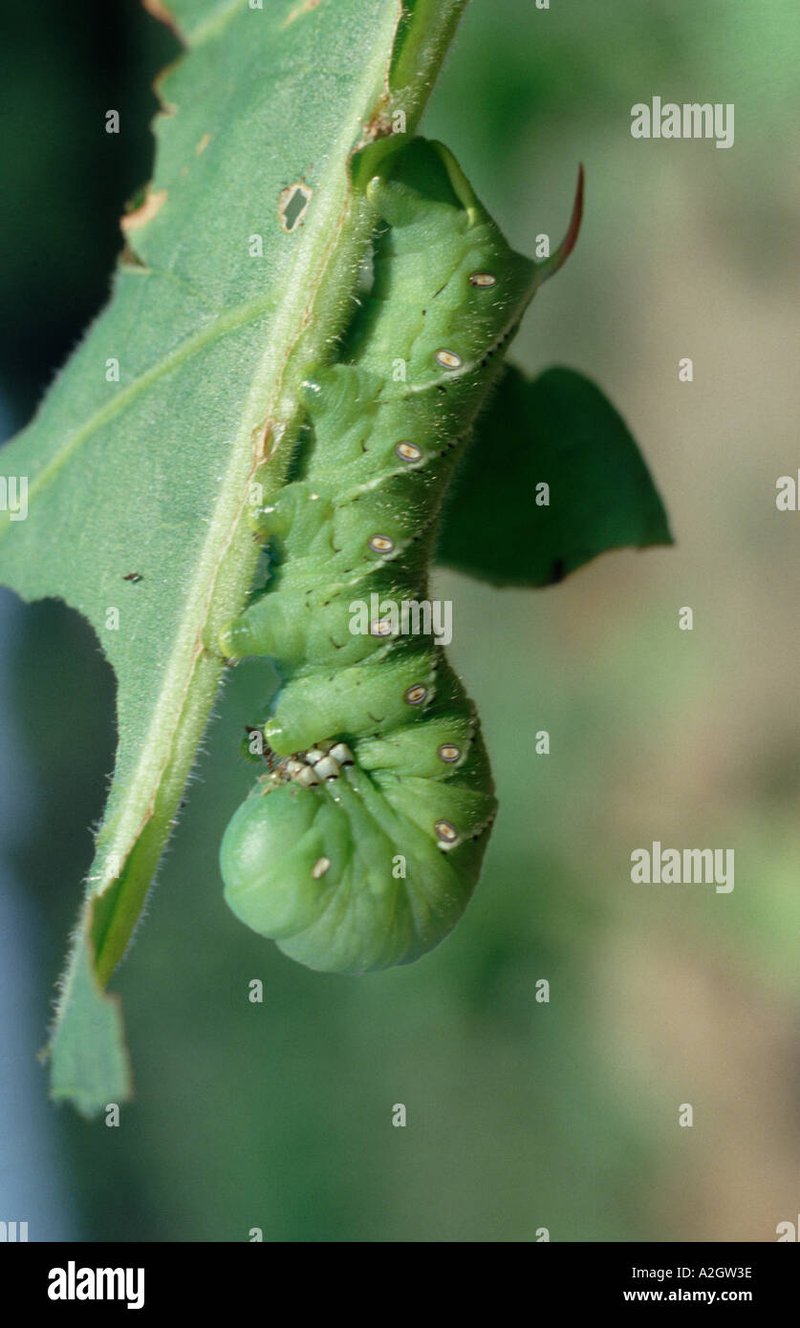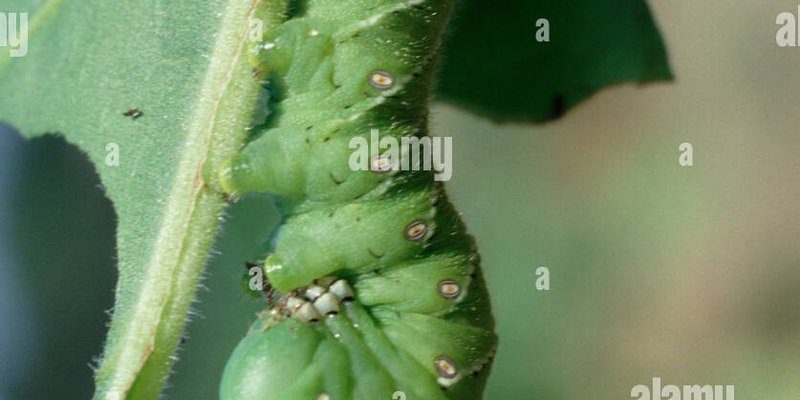
Imagine your garden as a buffet for these pests. Both hornworms and caterpillars love to feast, but they have different appetites and behaviors. Recognizing their damage can help you pinpoint which ones are causing trouble and how to best tackle the problem. So, let’s dive in and explore the world of hornworms and caterpillars, comparing their damage and how to manage it effectively.
What Are Hornworms?
Hornworms are larval forms of certain moth species, most notably the tomato hornworm, which is a major pest for tomato plants. They get their name from the distinctive horn-like structure on their rear end, which looks a little intimidating but is mostly harmless to humans. These green caterpillars can grow up to 4 inches long and have a voracious appetite, capable of stripping your precious tomato plants bare overnight.
You might notice hornworm damage quite clearly. These pests tend to eat the leaves of your plants, leaving behind large, jagged holes. If you see frass—tiny black droppings—scattered around the base of your plants, that’s another sign you might have hornworms lurking. Keep an eye out for the telltale signs, as hornworms can cause significant damage in a short amount of time.
What Are Caterpillars?
Caterpillars come from a variety of moths and butterflies and exhibit a wide range of appearances and behaviors. Unlike hornworms, which are primarily associated with specific plants, caterpillars can target many types of foliage, from ornamental flowers to garden vegetables. Depending on the species, they can range in color from green to brown to even bright colors with patterns.
The damage caused by caterpillars can vary significantly. Some caterpillars prefer to nibble on leaves, resulting in irregular holes, while others might eat entire leaves or even flowers. You might even find some caterpillars wrapping themselves in silk, creating a web-like appearance on the plants. Identifying the specific caterpillar damage can help pinpoint which species you’re dealing with.
Comparing Damage: Hornworms vs. Caterpillars
So, how do you actually tell hornworm damage from caterpillar damage? Here are a few key differences to keep in mind:
- Size and Appearance: Hornworms are much larger than most caterpillars, measuring up to 4 inches, while many caterpillars can be just an inch or two long.
- Feeding Patterns: Hornworms tend to munch in a more aggressive and voracious manner, often stripping whole sections of the plant. Caterpillars might be more subtle, chewing away pieces of leaves without completely defoliating a plant.
- Frass Evidence: Both will leave droppings, but hornworm frass is much larger compared to the small pellets left by many caterpillars.
Recognizing these patterns can make all the difference. It’s like being a detective in your garden, where understanding the clues leads to better management of these pests.
Signs of Hornworm Damage
When it comes to hornworm damage, you’ll want to be on the lookout for a few key indicators:
– **Large Holes on Leaves:** Hornworms can really do a number on your plants. Look for broad, irregular holes that indicate a ravenous creature at work.
– **Frass:** As I mentioned earlier, the droppings from hornworms are larger and can easily be spotted on the ground or stuck to leaves.
– **Missing Flowers or Fruit:** If your tomato plants are suddenly devoid of blossoms or unripe tomatoes, hornworms might be the reason. They often munch on these parts, leading to reduced yields.
Tracking these signs can help you catch hornworms before they completely devastate your plants.
Signs of Caterpillar Damage
Caterpillar damage can often be subtler, but it’s just as critical to identify:
– **Irregular Leaf Edges:** Caterpillars will typically eat around the edges of leaves, creating a jagged appearance. This is unlike hornworms, which can leave entire sections bare.
– **Webs or Silk:** Some species of caterpillars create silk webs, especially if they’re in their later stages of development. This can give a plant a ragged look.
– **Diversity of Damage Locations:** Caterpillars might attack multiple plants or different sections of a single plant, often making it harder to pinpoint their presence.
Being aware of these signs can help you safeguard your garden before it’s too late.
How to Manage Hornworms
If you spot hornworms in your garden, here’s how to tackle them:
1. **Handpicking:** Honestly, this is one of the most effective methods. Just check your plants regularly and remove any hornworms you find. It might sound a bit gross, but it’s a quick way to protect your plants.
2. **Natural Predators:** Encourage birds and beneficial insects like wasps, which can help keep hornworm populations in check. You can attract birds by adding bird feeders or houses around your garden.
3. **Organic Pesticides:** If the infestation is severe, consider using organic pesticides that target hornworms specifically. Always follow the package instructions to ensure it’s safe for your plants.
Using these techniques can help keep hornworms at bay and protect your garden.
How to Manage Caterpillars
Caterpillar control can be similar yet requires some slight adjustments:
1. **Regular Inspections:** Keep an eye out for eggs, which are often laid on leaves. Catching them early means you can prevent larger infestations.
2. **Neem Oil:** This natural pesticide can effectively disrupt the feeding habits of caterpillars. Spray it on your plants as per the instructions to reduce caterpillar numbers.
3. **Companion Planting:** Certain plants, like marigolds, can deter caterpillars while attracting beneficial insects. This is a win-win for your garden!
These steps can make a big difference in helping manage caterpillar populations.
Final Thoughts
In the battle for your garden, understanding the *difference* between hornworm damage and caterpillar damage is crucial. With the right knowledge and techniques, you can protect your plants from these pests without resorting to harsh chemicals. Recognizing their signs, knowing how to manage them, and regularly inspecting your garden are all key to keeping it thriving.
At the end of the day, it’s all about balance. You want your garden to flourish, and knowing how to handle these munching intruders can help ensure you enjoy the fruits (and veggies!) of your labor. Happy gardening!

